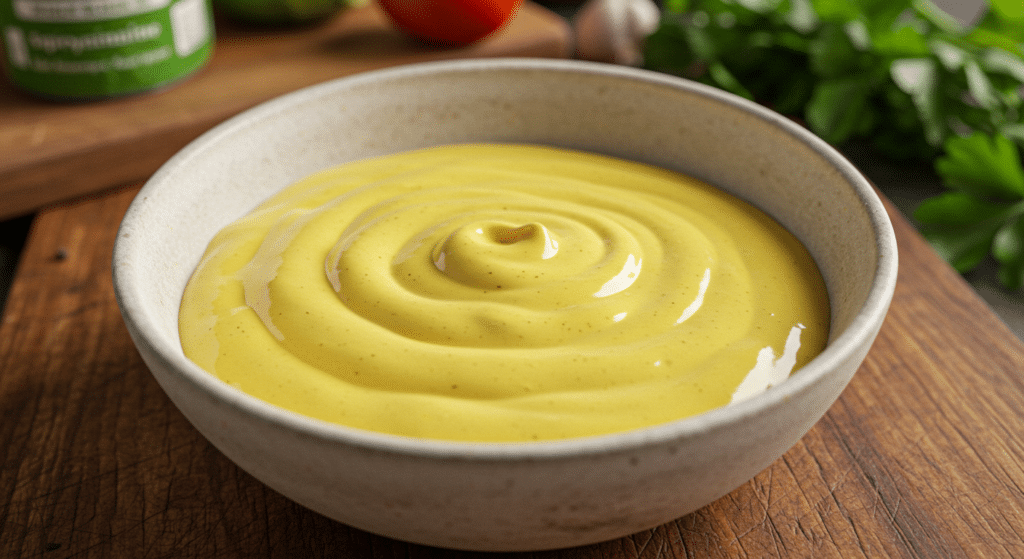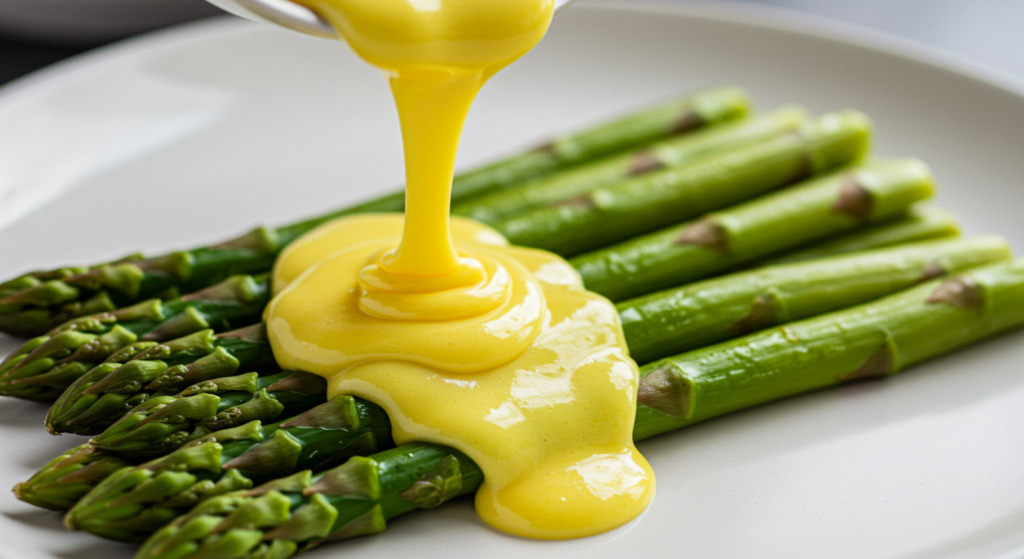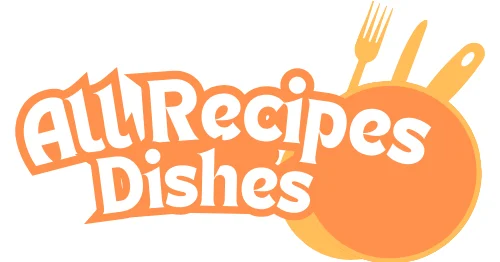Creamy Vegan Hollandaise Sauce Recipe: Delicious & Easy
Table of Contents
Are you searching for a rich and creamy hollandaise alternative that’s tasty and simple to make? You’ve found the right spot! This recipe gives a plant-based twist to a classic favorite. It’s perfect for making your breakfast or brunch dishes even better.
With just a few basic ingredients, you can whip up a vegan hollandaise sauce that’s free from dairy but full of flavor. This easy recipe lets you enjoy a luxurious and tangy sauce. You won’t have to give up on taste or dietary preferences.
Key Takeaways
- Learn how to make a delicious and creamy vegan hollandaise sauce.
- Discover the simple ingredients needed for this plant-based recipe.
- Understand the benefits of choosing a vegan alternative to traditional hollandaise sauce.
- Explore the versatility of this sauce in various dishes.
- Get tips on storing and reheating your vegan hollandaise sauce.
The Magic of Vegan Hollandaise Sauce
Vegan hollandaise sauce is amazing because it’s creamy like the real thing but doesn’t use animal products. It’s a big step forward in plant-based cooking, giving us a healthier version of a French favorite.
Traditional Hollandaise vs. Plant-Based Version
Traditional hollandaise sauce has eggs, butter, and lemon juice or vinegar. It’s rich but high in cholesterol and fats. On the other hand, vegan hollandaise uses vegan butter and egg substitutes. This makes it lower in calories and fat.
| Aspect | Traditional Hollandaise | Vegan Hollandaise |
|---|---|---|
| Main Ingredients | Eggs, Butter | Vegan Butter, Egg Substitutes |
| Calorie Content | High | Lower |
| Cholesterol | High | Zero |
Health Benefits of Going Egg-Free
Choosing egg-free vegan hollandaise is good for your health. It cuts down on cholesterol and saturated fats. Plus, it’s better for the planet and animals, fitting with ethical eating.
Egg-free diets are great for people with egg allergies or intolerances. They make the sauce more accessible. Also, using plant-based alternatives helps our food system be more sustainable.
Essential Ingredients for Your Vegan Hollandaise Sauce
Creating a great vegan hollandaise sauce starts with picking the right ingredients. You need to find plant-based options that can replace eggs and butter. This will help you get that creamy texture we all love.
Plant-Based Alternatives for Eggs and Butter
To make a vegan hollandaise sauce, you must find good substitutes for eggs and butter. Here are some common ones:
- Plant-based milks (like soy milk or almond milk) to make a creamy base.
- Vegan butter or margarine that can be melted and mixed well.
- Egg replacers like aquafaba or commercial egg substitutes for better mixing.
Flavor Enhancers and Seasonings
To make your vegan hollandaise sauce taste rich and complex, add these:
- Lemon juice or vinegar for a tangy flavor.
- Garlic powder or onion powder for more depth.
- Herbs and spices like paprika, salt, and pepper to taste.
Nutritional Profile
Vegan hollandaise sauce is a healthier choice than the traditional version. It has less cholesterol and saturated fat. Here’s a quick look at its nutritional values:

| Nutrient | Approximate Value per Serving |
|---|---|
| Calories | 120-150 |
| Fat | 10-12g |
| Saturated Fat | 1.5-2g |
| Cholesterol | 0mg |
| Sodium | 200-250mg |
Kitchen Tools You’ll Need
For a great vegan hollandaise sauce, the right kitchen tools are key. You’ll need a few important items to make it.
A blender or food processor is essential for mixing the sauce. You’ll also need a saucepan to heat the ingredients. Plus, a double boiler or a heatproof bowl to warm the sauce gently.
Having a whisk helps with mixing and seasoning. These cooking equipment pieces make preparing your vegan sauce easy and quick.
Step-by-Step Vegan Hollandaise Sauce Recipe
We’ll guide you through making the perfect vegan hollandaise sauce. This recipe involves several steps to create a rich, creamy, and tangy sauce.
Preparing Your Base Ingredients
To begin, prepare your base ingredients. You’ll need vegan egg yolks, lemon juice, and plant-based butter or margarine. Choose a high-quality vegan butter for the best results. Also, pick a non-dairy milk alternative. Make sure all ingredients are at room temperature for smooth blending.
- Select a suitable vegan egg substitute.
- Measure out your lemon juice and non-dairy milk.
- Melt your vegan butter or margarine.
Blending Techniques for Silky Texture
The blending technique is crucial for a silky sauce. Use a high-speed blender or food processor for effective emulsification. Begin by blending your egg yolks, lemon juice, and a pinch of salt until smooth. Then, slowly add the melted vegan butter while blending until the sauce thickens.
- Blend egg yolks and lemon juice until smooth.
- Slowly add melted vegan butter while blending.

Heating Methods for Perfect Consistency
To get the perfect consistency, heat your sauce gently. Avoid overheating to prevent the sauce from breaking. Place a heat-safe bowl over simmering water or use a double boiler for gentle heating. Stir constantly until the sauce is at the right temperature and consistency.
Final Seasoning Adjustments
After heating and achieving the right consistency, it’s time for seasoning. Sample your sauce and tweak the seasoning to suit your taste. You might want to add more lemon juice, salt, or a pinch of cayenne pepper.
Mastering Your Vegan Hollandaise Sauce
Now that you’ve made your vegan hollandaise sauce, it’s time to master it. Achieving restaurant-quality results requires attention to detail and a few expert tips.
Troubleshooting Common Issues
Common issues with vegan hollandaise sauce include separation and an inconsistent texture. Let all ingredients reach room temperature before blending to prevent curdling. If your sauce does separate, try whisking in a little warm water or lemon juice to re-emulsify it.
Pro Tips for Restaurant-Quality Results
To take your vegan hollandaise to the next level, use high-quality ingredients and pay attention to the temperature. Use a thermometer to ensure your sauce is heated to the correct temperature. Additionally, adjust the seasoning to taste, and consider adding a pinch of salt or a squeeze of lemon juice to enhance the flavor.
Creative Variations of Vegan Hollandaise
Explore the many ways to make vegan hollandaise sauce. Try new ingredients to create unique flavors. These variations can enhance any dish, matching your taste preferences.
Vegan hollandaise is very flexible. It can be used in many dishes, making it a great addition to your cooking.
Spicy Chipotle Hollandaise
Make your vegan hollandaise spicy with chipotle peppers. This is perfect for those who like a bit of heat. Just mix in some chipotle peppers for a richer taste.
Fresh Herb-Infused Hollandaise
Add fresh herbs like parsley, dill, or tarragon to your hollandaise. It’s great for spring and summer dishes. It brings a fresh and bright taste to your vegan meals.
Lemon-Dill Hollandaise
Try mixing lemon juice with dill for a tangy and refreshing sauce. It’s perfect with steamed veggies or as a dip.

Perfect Pairings: Serving Your Vegan Hollandaise
Now that you have vegan hollandaise sauce, let’s explore some creative ways to serve it. This versatile condiment can make any dish, from breakfast to dinner, taste amazing. It’s also great for coming up with new recipes.
Vegan Eggs Benedict Ideas
Make your breakfast or brunch special with vegan eggs benedict. Start by toasting English muffins. Then, place vegan eggs on top. Finish it off with your homemade hollandaise sauce. Add some sautéed spinach or roasted veggies for extra taste and health benefits.
Vegetable Dishes Enhanced by Hollandaise
Vegan hollandaise sauce is perfect with steamed or roasted veggies. Try it with asparagus, artichokes, or steamed broccoli. The sauce’s richness complements the veggies’ natural sweetness, making for a tasty contrast.
| Vegetable | Pairing Suggestion |
|---|---|
| Asparagus | Steamed asparagus with lemon zest |
| Broccoli | Roasted broccoli with garlic |
| Artichokes | Steamed artichokes with a sprinkle of paprika |
Creative Serving Suggestions
Don’t just stick to traditional pairings. Try vegan hollandaise as a dipping sauce for fries or a topping for pasta. It’s also great with grilled or baked tofu, adding a creamy touch to your meal.
Storing and Reheating Your Vegan Hollandaise Sauce
Storing and reheating your vegan hollandaise sauce right is key. It keeps the sauce creamy and flavorful. Knowing the best ways to store and reheat it is important.
Refrigeration Guidelines
Pour your vegan hollandaise sauce into an airtight container to store it in the fridge. This keeps it fresh and prevents odors from other foods. You can keep it in the fridge for up to 3 days.
When you’re ready to use it, stir the sauce well before reheating.
Tip: If the sauce separates in the fridge, it’s okay. Just whisk it well when you reheat it.
Freezing and Thawing Methods
To store it longer, freeze your vegan hollandaise sauce. Use an airtight container or freezer-safe bag, leaving room for expansion. Write the date on the container and freeze it for up to 2 months.
To thaw, put the container in the fridge overnight. Or thaw it quickly by soaking it in cold water. After thawing, reheat the sauce slowly, whisking constantly to get its creamy texture back.
Note: Freezing might change the sauce’s texture a bit. But, reheating it right can make it smooth again.
Troubleshooting Guide
Even with a great recipe, things can go wrong. Here’s how to fix common vegan hollandaise sauce problems. Issues like separation, texture problems, and flavor imbalances can be fixed with the right techniques.
Understanding the causes of these issues is key to resolving them effectively.
Fixing Separation and Texture Issues
Separation in vegan hollandaise sauce often occurs due to incorrect emulsification or overheating. To fix this, try whisking in a small amount of cold water or plant-based milk to re-emulsify the sauce. For texture issues, ensure that your sauce is heated gently and not boiled.
- Re-emulsify the sauce with cold water or plant-based milk.
- Avoid overheating the sauce.
- Use a gentle heating method.
Adjusting Flavor and Consistency
Flavor and consistency adjustments are crucial for a perfect vegan hollandaise sauce. If the sauce is too thick, thin it with a little water or lemon juice. To make the sauce thinner, use less plant-based milk or add extra vegan butter.
Tips: Taste and adjust seasoning as needed. Add a bit of salt or a splash of lemon juice to enhance and balance the taste.
Conclusion
This article showed you how to make a tasty vegan hollandaise sauce. It’s a great choice for those who don’t eat eggs. You can make it with plant-based ingredients and follow simple steps.
Now, you can try different flavors like spicy chipotle or fresh herbs. This sauce is perfect for vegan eggs benedict or to make your veggies taste amazing. It’s a must-have in your kitchen.
In short, making vegan hollandaise sauce is easy and delicious. It’s a great vegan option that’s easy to make.
FAQ
What is vegan hollandaise sauce?
Vegan hollandaise sauce is a plant-based version of the classic French sauce. It’s made without eggs or dairy. Instead, it uses vegan butter, lemon juice, and plant-based milk.
How do I store vegan hollandaise sauce?
Store it in the fridge for up to 3 days or freeze for 2 months. Use an airtight container in the fridge. For freezing, pour into an ice cube tray and then into a freezer-safe bag.
Can I make vegan hollandaise sauce ahead of time?
Yes, it’s great for meal prep or special events. Just follow the storage tips and whisk before serving.
What are some common issues with vegan hollandaise sauce and how can I fix them?
Issues include separation, wrong consistency, and flavor. For separation, whisk in warm water or lemon juice. Adjust heating or add milk for consistency. For flavor, tweak the seasoning.
Can I customize vegan hollandaise sauce to my taste?
Absolutely. Add lemon juice, garlic, or herbs like parsley or dill. Try unique flavors like spicy chipotle or lemon-dill.
What are some serving suggestions for vegan hollandaise sauce?
Serve it with vegan eggs benedict, steamed veggies, or as a dip. It’s also good on vegan breakfast dishes or with grilled tofu or tempeh.
Is vegan hollandaise sauce healthy?
It’s a healthier option without eggs and dairy. Its healthiness depends on the ingredients used. Choose low-fat or nutrient-rich options to make it healthier.
Can I use different types of plant-based milk in vegan hollandaise sauce?
Yes, try soy milk, almond milk, or cashew milk. Find the one that tastes and feels right to you.
How do I achieve the right consistency for vegan hollandaise sauce?
Adjust plant-based milk or heating time for the right consistency. Constant whisking while heating helps achieve a smooth texture.

